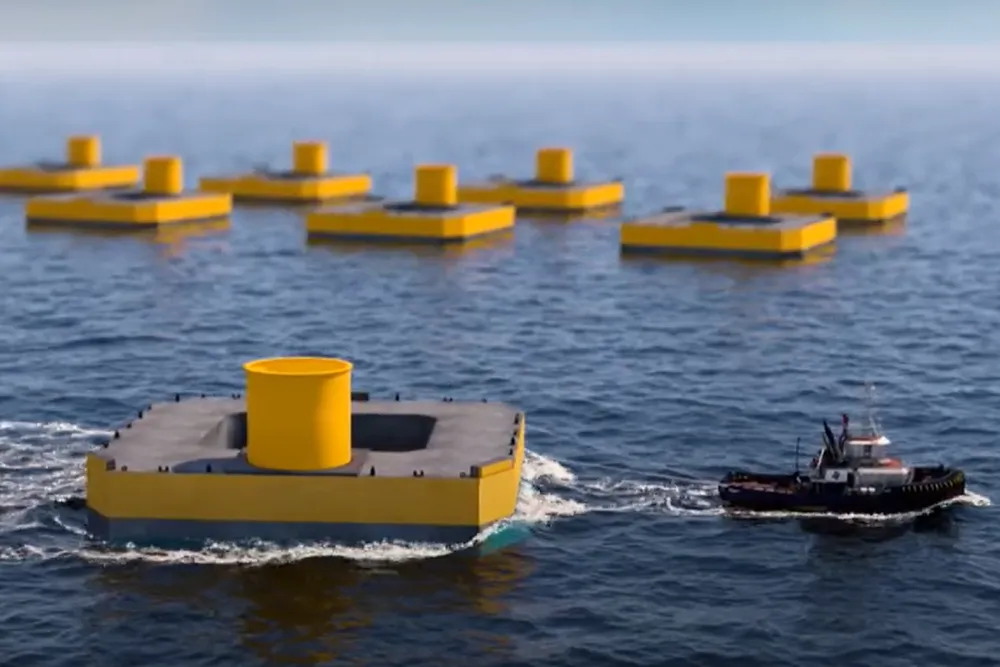Hull ranking for UK floating offshore wind comes up with surprising result
Investments suitable for concrete-based foundations are taking place at ports such as Ardersier and Kishorn

Concrete foundations could be the best option for developing floating offshore wind farms in the UK North Sea, a new report suggests.
Steel hull designs, especially semi-submersible concepts, have increasingly dominated the planning of floating offshore wind developers in recent years, but even these technologies are still relatively immature due to the slower-than-expected pace of scaling up from pre-commercial to gigascale projects.
The number of substructure designs and materials available to floating offshore wind farm developers already extends to about 150, and this bewildering variety can hinder a scaling up process that benefits from standardisation and mass industrialisation.
The UK Technology Leadership Board (TLB), a strategic industry body for the offshore energy sector, attempted to address this problem by commissioning an independent study considering a variety of designs, using steel, concrete and hybrid materials.
The study, which was carried out by consultancy firm OpenWater Renewables, surprised some in the industry by putting concrete-based designs in the top two positions in its ranking system.
The study found that advantages in terms of durability, low maintenance requirements, lower capital expenditure and suitability for UK construction gave concrete-based designs the edge over steel.
Ease of installation and repair were also seen as key differentiators due to the short weather windows in which critical work has to be done in the North Sea.
The study included semi-submersibles, barges and tension leg platform design concepts.
Using advanced software to rank the technology readiness level (TRL) of different concepts and came up with a shortlist comprising 11 semi-submersibles, three barges and one tension leg platform.
All of the shortlisted concepts were described as suitable for fabrication in the UK, once suitable port infrastructure is available.
Deep draft SPARs were excluded due to a lack of deep-water port facilities in the UK.
The work considered a fictional North Sea wind farm and key factors relevant to floating wind turbine foundations which impact end users’ selections for their projects.
Key criteria included installation, capex and opex, plus financial strength, project track record and technical maturity, with scoring measured across a range of technical, commercial and project execution characteristics.
These were to reflect the influence of the criterion on the Levelised Cost of Energy (LCOE) and project risk profile.
Data for the study included details of 107 different floating offshore wind design concepts up to the study's cut-off date.
Technical maturity was also a key factor in assessing the risk of selecting a concept, and consequently, for large-scale commercial wind farms
The notable aspects of its findings included the strong performance by concrete or hybrid concrete and steel concepts.
The two highest-ranked concepts in the shortlisted pool were both concrete, one barge-mounted and the other a semi-submersible design.
Although steel semi-submersibles were the most numerous on the shortlist, the study found that they were likely to be more expensive and require more maintenance than concrete hulls as the structures age.
The shortlisted concepts include another concrete barge and hybrid steel and concrete barge moored by a single point mooring (SPM).
The latter was found to offer some of the durability benefits of concrete, but with suggestions that it would pose the same higher maintenance requirements as suggested with the steel semi-submersibles.
“While the SPM simplifies integration of a quick connect/disconnect (QCDC) mooring system, it also adds critical mechanical components which will require maintenance and may adversely affect reliability,” the study stated.
The findings were welcomed by advocates of concrete floating wind solutions in the UK context.
"Concrete opens the door to more local content but this study also shows many of the benefits that are already understood by those coming from the oil and gas industry from the civil side of construction, including stability in a North Sea environment," noted Paul O'Brien, senior development manager at Highlands and Islands Enterprise (HIE).
"But it also showed other advantages, such as in operations and maintenance."
One steel tension leg platform (TLP) was included in the shortlisted pool.
“TLPs are lightweight and have good motion characteristics, which may have a positive impact on energy production. However, the complexity of their installation and disconnection in North Sea conditions resulted in low rankings for most TLP concepts,” the study stated.
In terms of concepts making the pool, the study included BW Ideol's Damping Pool design and the Sevan SWACH design as technically mature examples of concrete barges.
The Saitec SATH design was cited as a barge in hybrid steel and concrete, while the Bouygues OO Star and SBM Float4Wind were named as the designs for semi-submersible in concrete and TLP in steel, respectively.
Two different versions of Principle Power's WindFloat concept were named in the steel semisub shortlist, along with the Saipem Star, the Gusto TriFloat, the Equinor WindSemi, the Odfjell Deepsea Star, the Stiesdal TetraSub and the Ekwil INO-C.
The report also highlighted promising but less mature floating offshore wind concepts that are not yet at the prototype or demonstrator stage, which require accelerated development to be ready for deployment by 2030-2035.
The UK floating offshore wind sector is likely to be given new incentives toward narrowing down its choices in terms of design, supply chains and logistics, through the work of the new state-owned clean power developer GB Energy.
The OpenWater study may strengthen the case for the inclusion of concrete-based solutions in the design contest that GB Energy is expected to run for floating wind foundations.
Port investments in facilities appropriate for concrete-based foundations so far include a BW Ideol facility at Port of Ardersier and a dry dock expansion at Kishorn port.
(Copyright)